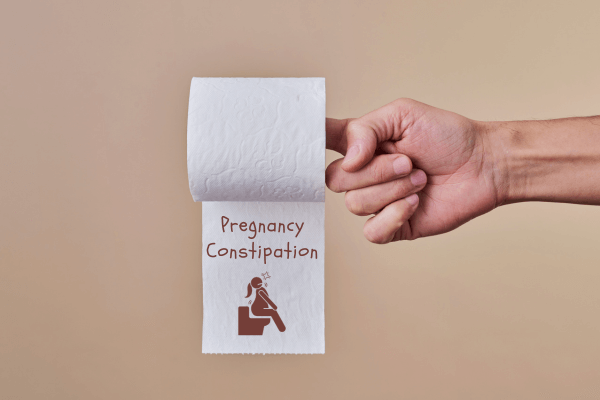Key Points
- Labor Defined: Labor is a complex process involving hormonal and physical changes, marked by contractions that dilate and efface the cervix, preparing for the baby's delivery.
- Signs of Labor: Key indicators include regular, intensifying contractions, water breaking, cervical changes, nesting instinct, and persistent lower back pain.
- Common Concerns: Timing anxiety, pain misconceptions, and the differentiation between real labor and false alarms like Braxton-Hicks contractions.
- Preparation and Stages: Understanding the stages of labor from early dilation to the delivery of the placenta and creating a birth plan will help reduce anxiety during birthing. Have that hospital bag packed and ready as well.
- Midwife Support: Midwives offer specialized care, emotional support, pain management, advocacy, and education throughout the pregnancy, labor, and postpartum periods. Consider having a midwife or doula on your birth support team to provide informational and emotional support throughout.
Labor is one of nature’s most intricate and profound processes, marking the conclusion of pregnancy and the beginning of new life. It’s a journey filled with anticipation, excitement, and often a fair share of anxiety. In this comprehensive guide, we’ll walk you through what labor is, the signs that suggest its onset, address common concerns and misconceptions, differentiate between false labor and Braxton-Hicks contractions, and advice on preparing yourself for labor. Our goal is to arm you with knowledge, making this remarkable journey as smooth and empowering as possible.
What is Labor?
Labor is the physiological process where the body prepares to deliver a baby, involving complex hormonal and physical changes. It’s marked by contractions of the uterine muscles which help in dilating and effacing the cervix, guiding the baby down the birth canal for delivery. These contractions increase in intensity and frequency leading up to the birth.
Hormonally, labor is driven by an increase in oxytocin, which regulates contractions, and endorphins that help manage pain and stress. Adrenaline may also play a role early on, heightening alertness as labor begins.
Beyond the physical, labor is an emotional and transformative experience, filled with anticipation, anxiety, and a profound sense of empowerment. It’s a journey that prepares you to meet your baby, marking the transition into parenthood. Each woman’s labor experience is unique, just as the new life it brings into the world.
Also Read- What is a normal birth?
Signs You May Be Close to Starting Labor
- Increased Braxton-Hicks Contractions: Increased Braxton-Hicks contractions, often referred to as “practice contractions,” are a common occurrence in late pregnancy. While heightened Braxton-Hicks activity can be a sign that labor is getting closer, they are not a definitive indicator, and it’s essential to differentiate them from true labor contractions. If unsure, consult your doula, midwife or doctor for guidance.
- The Baby “Drops”: Also known as ‘lightening,’ is a phenomenon in late pregnancy where the baby descends lower into the pelvis. This shift is a significant indicator that labor might be approaching. As the baby repositions itself, there is a noticeable lessening of pressure on the diaphragm and an increased pressure on the pelvis, making it easier to breathe but potentially causing more pelvic discomfort. While this event doesn’t necessarily pinpoint the exact onset of labor, it signifies the beginning stages of the baby’s journey into the birth canal, indicating that childbirth may be on the horizon.
- Increased Vaginal Discharge: The “bloody show” is a natural occurrence in late pregnancy, involving the discharge of mucus mixed with small amounts of blood from the cervix. It may appear pink, brown, or slightly bloody with a thick or stringy consistency resembling mucus. This event signals that the cervix is preparing for childbirth. Although it can occur weeks before labor, the bloody show is often a more imminent sign closer to the due date. Unlike true labor contractions, it is typically painless. If you observe a bloody show, informing your healthcare provider is recommended for guidance on the next steps and to assess the progression of labor.
- Energy Surge: A sudden burst of energy, known as the nesting instinct, can signify that labor is approaching. During the final weeks of pregnancy, some expectant mothers experience a surge of energy and a strong desire to prepare for the arrival of their baby. This phenomenon is commonly known as the “nesting instinct.” It’s characterized by a sudden burst of motivation to clean, organize, and set up the home for the newborn.
Also Read- Is having Vaginal discharge during pregnancy normal?
Signs of Labor
Recognizing the signs of labor is crucial to understanding when the moment has arrived. Here are the key indicators:
- Regular Contractions: Unlike the sporadic, mild contractions experienced earlier in pregnancy, real labor contractions follow a distinct pattern. They occur at regular intervals and progressively intensify, growing stronger and more frequent over time. This regularity and increasing intensity are key indicators that labor has begun, setting true labor contractions apart from the typical irregular sensations felt in earlier stages of pregnancy.
- Water Breaking: The rupture of the amniotic sac, commonly known as water breaking, is a notable sign of labor. This can manifest as a slow trickle of fluid or, in some cases, as a sudden gush. The release of amniotic fluid signifies that the protective barrier around the baby has broken, and labor is likely underway. It’s crucial to promptly inform your healthcare provider when this occurs, as they can provide guidance and monitor the progress of labor.
- Cervical Changes: As labor approaches, the cervix undergoes significant changes, including dilation (opening) and effacement (thinning out), in preparation for childbirth. These changes are often observed during prenatal check-ups, allowing healthcare providers to assess the progress of labor. Monitoring the cervix provides valuable insights into the readiness of the body for delivery, making it an essential aspect of prenatal care to ensure a smooth and informed birthing experience.
- Lower Back Pain and Cramps: Persistent lower back pain and cramping, similar to menstrual cramps, can serve as indicators of the onset of labor. These discomforts, distinct from regular pregnancy aches, may suggest the body’s preparations for childbirth.
Also Read- 10 Ways Prenatal Care Can Improve Your Baby’s Health
False Labor and Braxton-Hicks Contractions
False labor and Braxton-Hicks contractions are common experiences in late pregnancy. Distinguishing between these occurrences is crucial, as true labor involves progressive changes in the cervix, while Braxton-Hicks and false labor contractions are generally temporary and manageable with simple measures like rest and hydration. If uncertain, consulting with your healthcare provider is advised for proper assessment and guidance.
- Braxton-Hicks Contractions: Braxton-Hicks contractions, often referred to as “practice contractions,” are a common occurrence in late pregnancy. Often irregular and infrequent, these contractions are your body’s way of preparing for labor but don’t signify its start. The contractions are sporadic and serve as a rehearsal for the uterus in preparation for labor. As you approach childbirth, they may become more frequent and intense. Unlike true labor contractions, Braxton-Hicks contractions are usually irregular, don’t follow a consistent pattern, and are often painless. They are characterized by a tightening sensation in the abdomen, lasting for about 30 seconds to two minutes. Staying hydrated and changing positions can often alleviate these contractions.
- False Labor: False labor (also known as Prodromal labor) involves contractions that may feel real but do not lead to cervical dilation or effacement. Contractions may occur at regular intervals but do not progress as true labor contractions would. While the pain and discomfort can vary, the contractions usually do not increase in intensity over time. Unlike true labor, false labor contractions often subside with rest, hydration or a change in activity.
Also Read- The Science Behind Water Birth: How Does It Work?
Preparation for labor
- Classes and Support: Consider prenatal classes and support groups to learn more and connect with others on the same journey.
- Know Your Team: Familiarize yourself with the medical professionals who will assist you during labor and delivery.
- Pain Relief: Understand and consider the pain-relief options before you go into labor. Whether you aim for a drug-free delivery and would like to rely on various breathing techniques, massage, visualization, hypnosis, and other strategies to ease the pain of labor or prefer pain medication or regional anesthesia (such as an epidural, which numbs the lower half of your body), it is best to understand the options early on and know what your preferences are.
- Birth Plan: Drafting a birth plan can help you learn more in the process, know what to expect, improve your confidence and ensure your preferences are communicated to your healthcare team.
- Hospital Bag: Make a detailed checklist of what to pack for yourself, your partner, and your newborn and have the bag packed and waiting either by the door or in the car.
Questions to Ask Your Doctor and Birthing team
As you approach your due date, here are some items and questions to discuss with your doctor and the hospital team as part of your preparation:
- Discuss your birth plan and get the assurance and support you need for it.
- Find out what pain management options are available at each stage, and what you need to avail of them.
- Understand what are the signs that indicate you need to go to the hospital or birthing center.
- Find out what to expect once you check into the hospital for birthing and what you will need to have ready for it.
- Enquire on what paperwork can be done and steps taken in advance to make the process on the actual day easier for you.
Common Concerns and Misconceptions
- Timing Anxiety: Timing Anxiety is a common concern during late pregnancy, as many worry about not recognizing the onset of labor until it’s too late. It’s important to note that while the timing of labor varies, the signs are typically distinct and progressively intensify. Being attuned to the unique sensations of true labor, such as regular and increasingly painful contractions, the rupture of membranes, or the presence of a bloody show, can help ease anxiety. Understanding these signs and staying in communication with your healthcare provider can provide reassurance and ensure timely and appropriate responses as labor approaches.
- Labor Pain Anxiety: It’s normal to anticipate intense pain during labor, but it’s crucial to recognize that there are numerous safe pain management options and strategies available. Understanding and discussing these options with your healthcare provider can help alleviate concerns and ensure a more comfortable labor experience.
- Misjudging Labor: Some fear mistaking other conditions for labor. Understanding and monitoring the signs will build your confidence. Regular communication with your doula, midwife, or doctor will ensure timely guidance, and help further in promoting a smoother birthing experience.
Anxiety is a common emotion amongst pregnant women especially as labor draws close. Embracing a proactive approach, staying informed, and fostering open communication with your healthcare team can help ensure a confident and well-supported journey towards childbirth.
Takeaways
Empower Your Labor Journey with Veira Life
Veira Life offers the support, resources, and community you need for a well-informed and empowered birthing experience. Register now for expert guidance and to connect with a network that understands and supports your journey into motherhood. Your path to a confident, supported labor starts here with Veira Life.
References
FAQs
Baby movement may change before labor, often decreasing as the baby positions for birth.
- Nesting instinct.
- Regular, intensifying contractions.
- Cervical changes and “bloody show.”
Feelings vary; it’s common to feel discomfort, anticipation, and possible pre-labor symptoms.
The 5-1-1 rule is a guideline indicating when to go to the hospital: contractions every 5 minutes, lasting 1 minute, for 1 hour.
Yes, early contractions can feel similar to gas related cramps or mild abdominal discomfort.







